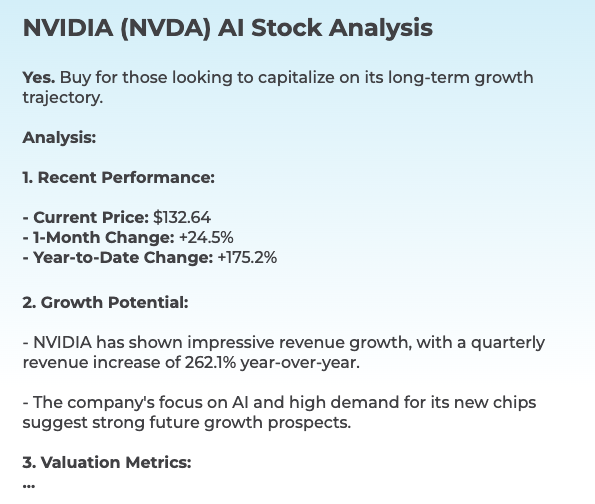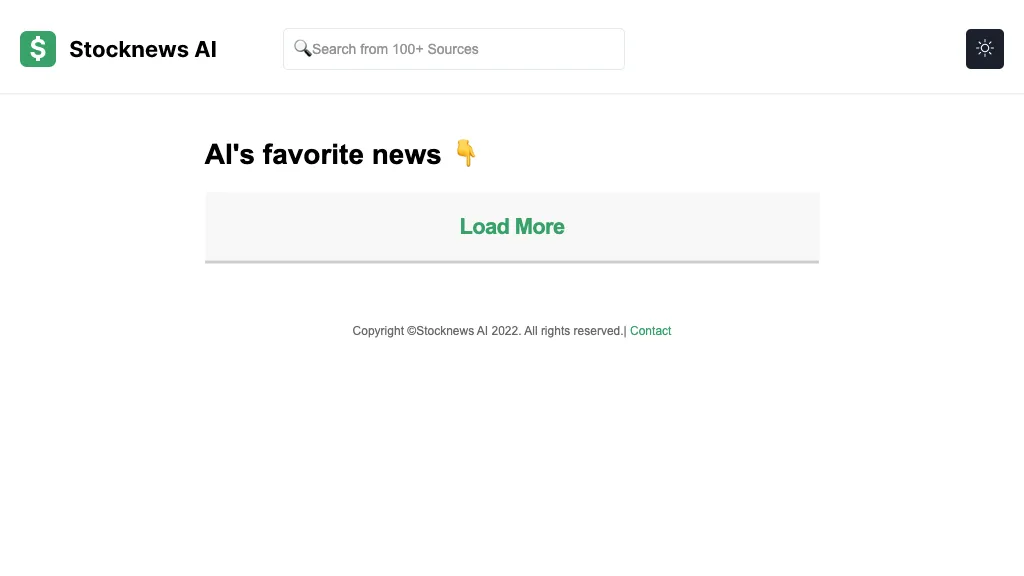Integrity and compatibility are crucial aspects to consider when considering AI stock predicting/analyzing trading platforms. Platforms that are compatible with existing tools, workflows, and systems can enhance productivity and efficiency. Here are the top ten tips to assess compatibility and integration.
1. Check Brokerage Integration
The supported brokers are listed below. Make sure that the platform you choose to use is linked to your brokerage or trading account.
Trade execution: Ensure that the platform offers direct execution of trades through the broker integrated.
Account synchronization: Check to see if your platform can synchronize account balances, transactions, and positions in real-time.
2. Check the API's availability
API access: Ensure the platform offers an API (Application Programming Interface) that allows developers to develop customized tools or automate workflows.
API documentation: Verify that the documentation for the API provides clear examples of use cases.
Rate limits: Check whether the API has acceptable rate limits and can accommodate your expected usage volume.
3. Examine the Third-Party Tool Integration
Popular tools: See if your platform is compatible with well-known tools such as Google Sheets or Excel.
Export and import of data. Be sure your platform can import or export data from/to any other tool.
Extensions/Plugins: Make sure that the platform works with plugins or extensions to provide enhanced capabilities.
4. Test Compatibility with Operating Systems
Desktop compatibility: Ensure that the device is compatible with your operating system of choice (Windows, macOS or Linux).
Mobile compatibility: Check if the platform offers a mobile app for iOS as well as Android.
Web-based: If you want to be flexible, make sure you check that your system can be accessed using the standard web browser.
5. Assess the Data Integration Capabilities
Data sources: Make sure whether the platform is integrated with multiple data sources (e.g. market data sources or news feeds).
Real-time Data Feeds: Examine to see if your service offers real-time analysis.
Historical data import: Check if the platform allows importing historical data for backtesting or for analysis.
6. Assess cloud and On-Premise Compatible
Cloud-based platform that is accessible anywhere with an internet connection.
On-premise solutions. If you are interested in deploying on-premise be sure to check whether your platform permits it.
Check the hybrid model. It combines on-premise and cloud capabilities.
7. Verify Cross Platform Synchronization
Device synchronization. Make sure the platform is synchronized with settings and data across devices (desktops/laptops/mobiles/tablets).
Real-time updates: Make sure that the changes you make on one device instantly show up on other devices.
Access offline - Determine whether you have access to information or have limited access to functions in the event that the platform isn't active.
8. Check for compatibility between trading strategies
Algorithmic trading - Ensure that the platform you choose allows automated or algorithmic trading strategies.
Custom indicators: Check if your platform allows scripts or indicators which are exclusive to you.
Backtesting strategies: Find out whether the platform can be used for backtesting trading strategies using historical information.
9. Examine Security and Compliance
Data encryption: Check whether the application uses encryption to safeguard data during transit and in rest.
Verify that your platform is compatible with a secure authentication method (e.g. 2-factor authentication).
Compliance with regulatory requirements: Ensure that the platform complies to the relevant regulations (e.g. GDPR, FINRA or SEC).
10. Test Scalability Performance
Scalability is crucial. The platform needs to be able handle the growing amount of data, and the increasing number of users.
Performance under load - Verify that the platform is able to continue responding in conditions of high market volatility.
Resource usage: Find out the extent to which your platform is using its system resources (CPU/memory, bandwidth) efficiently.
Bonus Tips
Feedback from customers: Read user reviews and testimonials to determine the integration capabilities of the platform.
Trial period: Test the platform free of charge or download a demo to check out how it works with your current software and workflow.
Support for customers: Ensure that your platform has a solid customer support for integration-related issues.
Follow these tips to assess the compatibility and integration between AI platforms for predicting and analyzing stocks as well as your existing trading systems, and ensure that they increase your trading efficiency. Check out the recommended ai stock trading for website info including best ai trading software, ai stock trading, investment ai, trading ai, ai for investment, trading ai, ai for stock predictions, ai for investment, best ai for trading, trading with ai and more.

Top 10 Tips To Evaluate The Effectiveness Of Ai Platform For Analyzing And Predicting Trading Stocks
Analyzing the scalability of AI-driven trading and stock prediction platforms is vital to ensure they can cope with increasing data volumes, user demands and market complexities. Here are the top 10 tips to assess scalability:
1. Evaluate Data Handling Capacity
Check to see if your platform is able to analyze and process large data sets.
Why: A platform that is scalable must be capable of handling the increasing data volume without performance degradation.
2. Test the Real-Time Processing Capabilities
Tip: Check the ability of the platform to process live information streams, such live stock prices, or breaking news.
What's the reason? The analysis in real-time of trading decisions is crucial because delays could lead you to missing opportunities.
3. Check Cloud Infrastructure for Elasticity
Tips. Check if the platform is using cloud-based infrastructure such as AWS, Google Cloud and Azure, which can expand resources according to demand.
Why: Cloud-based platforms provide the flexibility. They permit the system to be scaled up or down according to the need.
4. Algorithm Efficiency
Tip : Check the computational effectiveness and the accuracy of AI models to make predictions.
The reason: Complex algorithms are resource-intensive Therefore, optimizing these algorithms is crucial to scalability.
5. Study Parallel and Distributed Computing
Tips: Make sure that the platform uses parallel processing or distributed computing frameworks (e.g., Apache Spark, Hadoop).
Why: These technologies enable faster data processing and analysis over many nodes.
Examine API Integration & Interoperability
Tip: Check the platform's integration with external APIs.
What's the reason? Seamless integration guarantees that the platform is adaptable to new information sources and environments for trading.
7. Analyze User Load Handling
Tip: Simulate large user traffic to test how the platform performs under pressure.
The reason is that a platform that can scale should be able to maintain its performance as the number of users increase.
8. Analyze the model retraining and adaptability
Tips Check how often the AI models are retrained with new data.
Why: Markets evolve, and models must adapt quickly to keep their precision.
9. Verify Fault Tolerance and Redundancy
TIP: Ensure that the platform has failover mechanisms and redundancy for hardware or software malfunctions.
Since the cost of downtime in the trading industry and trading, fault tolerance is essential to scalability.
10. Monitor Cost Efficiency
Examine the costs of increasing the capacity of the platform. This includes cloud resources, data storage as and computational power.
What is the reason: The expense of scalability should not be unsustainable. Thus, it's important to balance performance with cost.
Bonus Tip: Future-proofing
Assuring that the platform will be able to handle the latest technology (e.g. advanced NLP quantum computing, quantum computing) and regulatory changes.
If you focus on these aspects it is possible to evaluate the scalability of AI stock prediction and trading platforms, making sure they are robust, efficient and ready for the future expansion. Follow the top more about the author about best ai stocks to buy now for website advice including ai in stock market, how to use ai for copyright trading, ai for trading stocks, can ai predict stock market, ai share trading, can ai predict stock market, ai investment tools, free ai stock picker, ai copyright signals, investing with ai and more.
